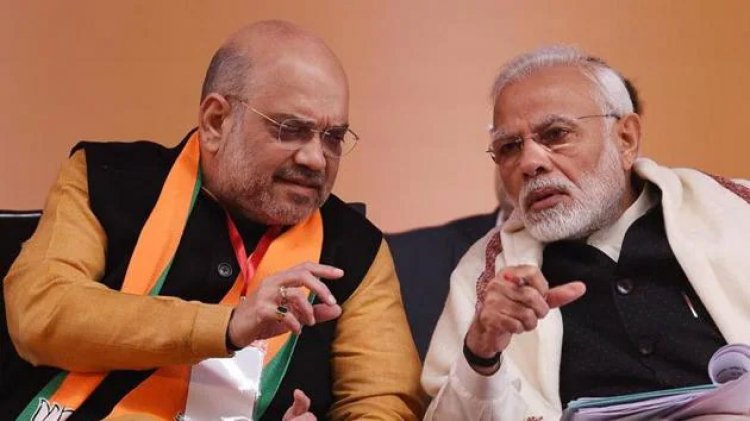BJP’S Vulnerabilities: Possibilities of Opposition Exploiting Them
Asia News Agency

In the Opposition, there is political a vacuum that the Congress and lately, Mamata Banerjee is seeking to fill. There is however, no road map that can counter the NDA and in particular, Prime Minister Narendra Modi’s persona. But some analysts see signs of his vulnerability.
Mamata Banerjee, filling political vacuum
The present is with West Bengal chief minister Mamata Banerjee. Analyst Shikha Mukerjee sees her fast, aggressive exercises in filling the space the Congress vacated “as opportunistic or it can be perceived as a necessity. For both the smaller regional parties and the Congress, the BJP is the common enemy. Its hard and presumably satisfying when the regional and smaller parties defeated the BJP in the Assembly or other civic polls, as Mamata Banerjee did in West Bengal and the NCP, Congress and Shiv Sena did in Maharashtra. By blocking the BJP occupation of more political space, the anti-BJP parties stalled the deeper and wider erosion of the middle ground in Indian politics and kept the ‘Sangh Parivar’s’ (RSS family) hard right communally divisive identity politics at bay.”
However, “the opposition to the BJP, based in the states, especially those that go to the polls in 2022, including Uttar Pradesh, Punjab and Uttarakhand in February-March and Gujarat and Himachal Pradesh in November, has a tough fight ahead. Any boosters it gets from parties outside the regional contest, like Mamata Banerjee for instance, could help convince risk-averse voters that first, the BJP isn’t invincible, and second, that there’s an alternative in the making against the BJP.” For these reasons Banerjee “is filling a vacancy in the Opposition the Congress is unable to fill.”
Significant Sharad Pawar-Mamata Banerjee meeting: In these circumstances, the Sharad Pawar-Mamata Banerjee meeting in Mumbai recently was “significant. It signalled a closing of ranks between two successful parties, both offshoots from the Congress…..It’s interesting that Samajwadi boss Akhilesh Yadav, the face of the anti-BJP fight in Uttar Pradesh, has chosen this moment to endorse Mamata Banerjee’s leadership at the national level. It points to a need to put a face and a name in place in the fight against the BJP.”
In the end the “new anti-BJP narrative in the making takes the exercise in building a platform and creating a coalition several steps further in shaping a stronger and more vibrant multi-party democracy that may not be as stolidly stable as the model of a single-party majority government, but is certainly more representative of the complex mosaic of interests and aspirations of a maturing Indian polity.”
The vulnerability of PM Modi
The Opposition needs to quickly get over its differences because 10 years of incumbency, writes Harish Khare (served as the Media Advisor to the Prime Minister's Office from June 2009 to January 2012) “have made Narendra Modi a much soiled and frayed leader. All political leaders—democrats, dictators and autocrats—come with a shelf-life and Modi is especially vulnerable.
“But 2024 is still far off……To begin with, Opposition leaders would have to demonstratively develop habits and a modus operandi of working together. The country would be willing to experiment with a non-BJP alternative provided the latter can ensure a degree of stability and maturity in running the nation’s affairs.
Opposition must work together: “And, to be sure, working together does not come easily to Indian political leaders and parties.” Although “at the national level, the NDA was the first reasonably successful coming together of national and regional parties and leaders, partly because Atal Bihari Vajpayee was an amiable, non-confrontational politician and partly because of a back-room operative called Pramod Mahajan. The 10 years of the UPA worked coherently and cogently mostly because of Manmohan Singh’s capacity for collegiate functioning and partly of because of that skilful hand-holder, Ahmed Patel.
"In recent years, we have had an extremely workable coalition arrangement going on in Maharashtra. It will be sobering to recall that the BJP lost Maharashtra because in its post-2019 arrogance the saffron party was simply not willing to acknowledge and accommodate its coalition partner’s ambitions…..The Maharashtra coalition has survived and prospered because of the sagacious presence of Sharad Pawar. Moreover, the ideologically incompatible Shiv Sena and Congress have learnt to work together in common interest.”
Rather than squabbling over who should be anchoring the anti-Modi front, Khare suggests “the Opposition parties have to reach a clear-headed understanding of their individual and collective strengths and weakness – and how they can help each other overcome their weaknesses and supplement their strength. Above all, everyone has to know their limits.”
Opposition front minus the Congress does not make sense
The Opposition presently is handicapped by Banerjee’s focus on establishing a front minus the Congress. The mathematics of an Opposition front minus the Congress does not make sense writes The Hindustan Times. "Leave alone winning a majority, it is unlikely that an Opposition minus the Congress will even contest more than half the seats in the elections. While the Congress’s performance in 2014 and 2019 does not inspire confidence, and it has bumbled from one crisis to another, it remains the only national Opposition party (unless the Aam Aadmi Party or the Trinamool Congress wins another state). And while a 1996-like scenario, where the Congress supports an Opposition front from the outside, is possible, it isn’t probable. There is, thus, merit in what Sanjay Raut of the Shiv Sena said on Tuesday — that there can be no Opposition front without the Congress. What we are witnessing now is the elaborate jockeying for pole position of the Opposition front. It is something likely to continue through 2022 and 2023 — and a consensus will be difficult to reach.”
















